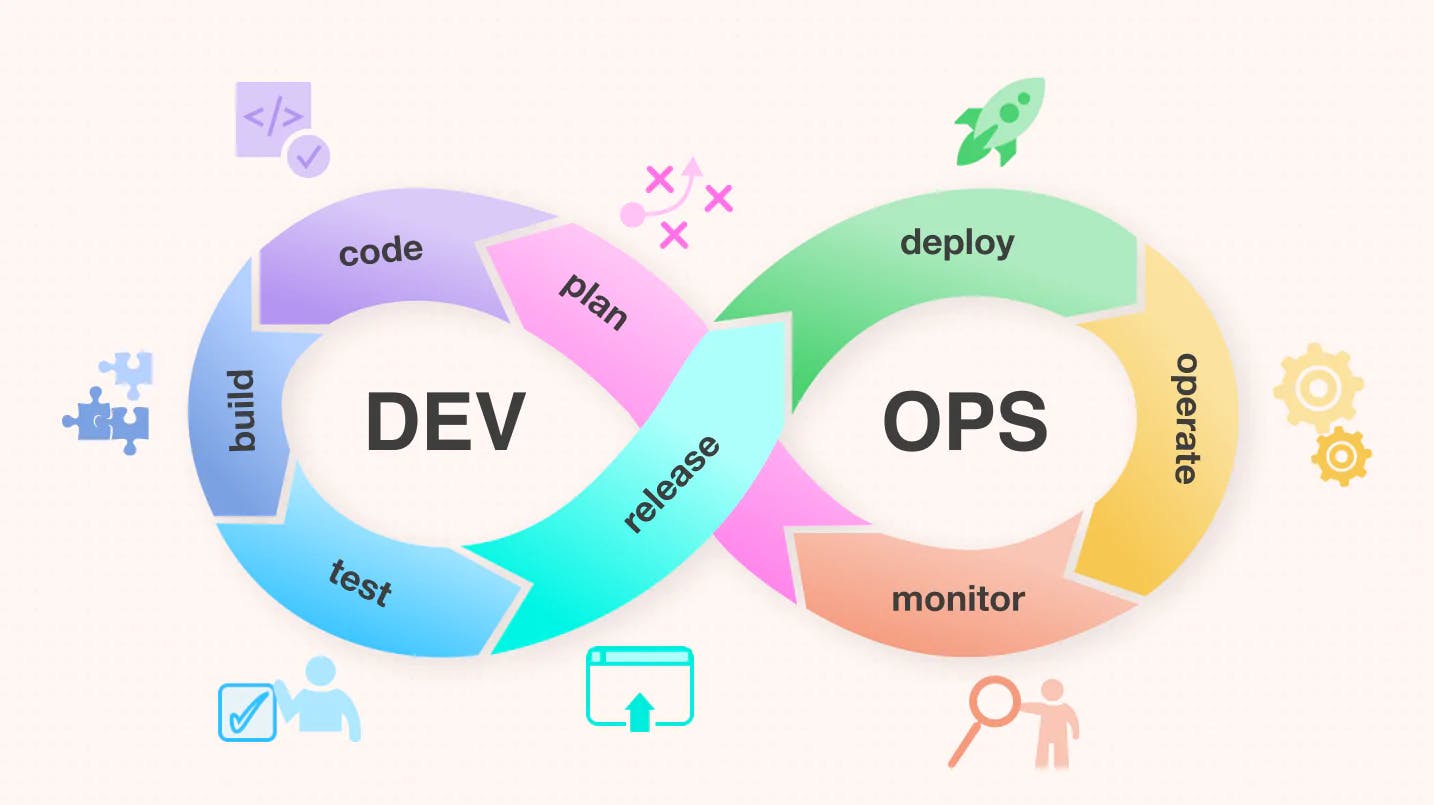I am writing an article that serve as an introduction to DevOps and related concept. I hope you enjoy them and find them useful. Onwards!
• DevOps: -
DevOps is basically a combination of two words- Development and Operations. DevOps is a culture that implements the technology in order to promote collaboration between the developer team and the operations team to deploy code to production faster in an automated and repeatable way.
• The list of DevOps practices includes: -
→ Infrastructure as Code (IaC)
→ Continuous Integration
→ Automated Testing
→ Continuous Deployment
→ Release Management
→ App Performance Monitoring
→ Load Testing & Auto-Scale, etc.
• Why DevOps: -
The goal of DevOps is to increase an organization’s speed when it comes to delivering applications and services. Many companies have successfully implemented DevOps to enhance their user experience including Amazon, Netflix, etc.
• What is Infrastructure, Automation and Scaling: -
Infrastructure, automation, and scaling are three important concepts in modern IT and software development, especially in the context of DevOps practices.
→ Infrastructure- refers to the underlying hardware and software components that enable the functioning of applications and systems. This can include servers, storage devices, networking equipment, and operating systems. Infrastructure can be on-premises, in the cloud, or a hybrid of both.
→ Automation- refers to the use of technology to automate manual and repetitive tasks, such as software testing, configuration management, and deployment.
→ Scaling- Scaling in DevOps is characterized as an automation-driven environment where developers or enterprises can adopt DevOps culture and choose the right technologies to scale their business growth. It refers to the ability of a system to handle increased workload or demand.
• DevOps Lifecycle: -

DevOps lifecycle is the methodology where professional development teams come together to bring products to market more efficiently and quickly. These are- Plan, Code, Building, Test, Releasing, Deploying, Operating, and Monitor.
→ Plan: Determining the commercial needs and gathering the opinions of end-user by professionals in this level of the DevOps lifecycle.
→ Code: At this level, the code for the same is developed and in order to simplify the design, the team of developers uses tools and extensions that take care of security problems.
→ Build: After the coding part, programmers use various tools for the submission of the code to the common code source.
→ Test: This level is very important to assure software integrity. Various sorts of tests are done such as user acceptability testing, safety testing, speed testing, and many more.
→ Release: At this level, everything is ready to be deployed in the operational environment.
→ Deploy: In this level, Infrastructure-as-Code assists in creating the operational infrastructure and subsequently publishes the build using various DevOps lifecycle tools.
→Operate: The release is live now to use by customers. The operations team at this stage takes care of server configuring and provisioning using tools like Chef.
→ Monitor: In this stage, the DevOps pipeline is monitored based on data collected from customer behavior, application performance, etc. Monitoring the entire environment helps teams find the bottlenecks impacting the development and operations teams’ productivity.

DevOps involves a number of different practices, tools, and technologies. Some of the key elements of DevOps include:
Culture: DevOps is not just a set of tools and processes, but also a culture that encourages collaboration, communication, and shared responsibility between development and operations teams. This includes fostering a culture of continuous learning and improvement and encouraging experimentation and risk-taking.
Continuous Integration (CI): CI is the practice of regularly merging code changes into a shared repository, and automatically building and testing the code to ensure that it meets the team's quality standards. This enables teams to catch and fix bugs earlier in the development process, and avoid integration problems that can arise when changes are made in isolation.
Continuous Delivery (CD): CD builds on the CI process by automating the deployment of code changes to production environments, so that new features and updates can be delivered to users quickly and reliably. This involves using tools and processes to automate the build, testing, and deployment of code changes, and ensuring that these changes can be rolled back quickly if necessary.
Infrastructure as Code (IaC): IaC is the practice of managing and provisioning infrastructure through code, rather than manually configuring servers and systems. This enables teams to treat infrastructure like software, and use version control, testing, and automation to manage and deploy changes to infrastructure configurations.
Monitoring and Logging: DevOps teams use a variety of tools to monitor and log system performance, including metrics, logs, and alerts. This enables teams to identify and address issues quickly and track key performance indicators (KPIs) over time.
Automation: DevOps emphasizes the use of automation tools and processes to streamline workflows and eliminate manual tasks. This includes everything from automated testing and deployment to automated infrastructure provisioning and configuration management.
Collaboration and Communication: DevOps teams rely on a variety of collaboration and communication tools to work together effectively, including chat platforms, video conferencing, project management software, and version control systems. These tools help teams stay aligned on goals and priorities, and quickly resolve issues that arise during the development process.
By combining these different components and practices, DevOps teams can deliver high-quality software faster and more efficiently than traditional development approaches.
• • •
This is the #Day01 of the #90DaysofDevOps challenge! Hope you found this article informative and useful so please share it with others who might benefit from it.
Thanks for reading this article.
Keep Learning...